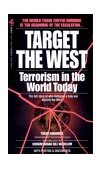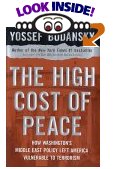|
| Home | About Kashmir Herald | |
Volume 4, No. 4 - October 2004 |
|
| Featured Article |
|
|
|
Radical
Islam in Central Asia Prof. K. N. Pandita Many political commentators are intrigued how radical Islam could find a foothold in the Central Asian Republics particularly in Uzbekistan and Tajikistan. One general misunderstanding needs to be corrected. Of the five Central Asian republics Uzbekistan and Tajikistan have moved away from their nomadic traditions and settled down as sedentary societies. The remaining three republics held on somewhat tenaciously to nomadic life style. That is a phenomenon least suited to the proliferation of dogmatism. The difference between political Islam and secular Islam is that while the former may or may not be secular the latter is always non-secular in content. Political Islam has short term as well as long term agenda. Its short term agenda is non-confrontational and non-provocative. Its long term agenda is the logical outcome of sustained projection of Islamic values and political system. And that is the establishment of an Islamic state on the basis of sharia and “Islamic democracy.” Even before the Soviet Union collapsed, Islamic Renaissance Party (IRP) chief, Davlat Usman is reported to have said, “We must teach people Islam, since we do not want to establish Islamic rule by force. God willing, we will achieve Islamic rule in the future in one way or another.” The roots of the Tajik Islamic Renaissance Party are traceable in the secret Islamic movement of the 1960s and 1970s. Also the Soviet - Afghan conflict of 1979-89 had its reverberations in Tajikistan. Moreover the north-south ethnic tension in Tajikistan also stimulated the ideology of radical Islam. In the Tajik civil war IRP played a role though it also became a partner in the coalition government on 27 June 1997. Islamic revivalism in Central Asia and particularly in Tajikistan became noticeable with Gorbachev coming to power in 1985. But radical ideologies and lessons in extremism were imported from other Muslim countries. More prominent among these were Saudi Arabia, Afghanistan and Pakistan. The exporters of extremist ideologies supported Wahhabism and the Islamic Movement of Uzbekistan (IMU). Founded by Abd-al-Wahhab of Saudi Arabia, Wahhabism received support of the Arab tribal chief Muhammad Ibn-Saud leading a militant reform movement in Arabia. They were called Muwahiddin advocating ‘Oneness of God.’ With the Saudi royal family adopting Wahhabism as state law, the creed gained legitimacy with the Saudi monarchy. After the oil boom of 1970, Saudi Arabia made the propagation of Wahhabism a major mission of its foreign policy. Wahhabism makes no compromise with the Sufis and Shiites. The creed is extremely intolerant of others. They claim to fight against “pollution” and innovation (bida’a) in Islam. Extremely anti-secular, Wahhabis believe that the sole purpose of politics and the state is to serve only their views and values. It needs to be mentioned that Wahhabism and Central Asian Sufism are ideologically incompatible with each other. Central Asian Islam is traditionally popular level Islam comfortable with deeply silent expression of faith. Thus when Wahhabism emerged in Saudi Arabia, its specific aim was to eliminate Sufi practices. Afghanistan had been exhorting the Central Asians and especially the Tajiks to conduct a jihad. The rise of Taliban with their Wahhabi ideology was a clear indication that Afghanistan’s involvement in Central Asia would reach new limits. Thus through the instrumentality of the Taliban, Wahhabism found an entry into the Islamic Movement of Uzbekistan (IMU) and also among the fundamentalists in Tajikistan. IMU, a coalition of radical Islamic militants, is fighting to overthrow the regime of Islam Karimov in Uzbekistan, and then establish an Islamic state. It may have similar agenda for other Central Asian states. Some researchers are led to believe that the 1998-founded IMU is actually the revival of Islam Lashkari of 1918 that had been fighting against the Bolsheviks. In 1990, IMU leader Yoldashev was the leader of Uzbekistan’s Adalat Party, which wanted implementation of sharia law in Uzbekistan. With the banning of the party, Yoldashev along with his close associates fled to Tajikistan where they joined the Tajik civil war. Namanghani, the frontline leader of IMU had served in a Soviet paratroops regiment during the war in Afghanistan. When he returned home, he became one of the organizations of tovba (repentance) movement. The movement was meant to study and propagate Islam. Later on he joined Adalat Party. IMU recruited unemployed young men from the most impoverished region of Central Asia with economic incentives and trained them to involve in terrorist attacks. In summer 1999, it started from its base in Afghanistan and Tajikistan raids into Uzbekistan and Kyrgyzstan. Hundreds of IMU militants based in Tajikistan invaded southern Kyrgyzstan capturing several villages and taking 20 hostages, including four Japanese geologists who were working for a gold-miming company. The militants seeking passage to Ferghana Valley had clashed with the Kyrgyz army. Notwithstanding IMU’s agenda for Uzbekistan, the organization recruited dissidents from all over Central Asia, especially the Ferghana Valley, which is divided between Uzbekistan, Kyrgyzstan and Tajikistan. This suggests that IMU is gradually developing into a “Pan-Central Asian movement”. It has attracted activists from Chechnya, Dagestan and the Uighurs of Chinese Turkestan. The IMU gunmen control the channels for trafficking drugs from Afghanistan to Central Asian countries and northward to Russia and then to Europe. Zubair ibn Abdu'r-Rahim, one of the prominent leaders of the movement stated in June 2001 that the organization “did not follow only Uzbek interests”. IMU is the direct beneficiary of Osama bin Laden’s Al-Qaeda. There are others also that support it. IMU militants have used the training camps and bases in Mazar-i Sharif and Kunduz in northern Afghanistan In the year 2001, IMU’s armed wing had an estimated 6,000 fighters trained in Afghan camps. In addition to donations by Osama bin Laden, they generated funds from narcotics and arms trafficking in and out of Afghansitan. Among other important countries that contributed to the process of radical Islam in Central Asia, Pakistan occupies very prominent place. During the Soviet – Afghan war, hundreds of young Uzbeks and Tajiks secretly went to Pakistan and began to be trained in Afghan camps as guerrilla fighters in the cause of militant Islam. Indoctrinated Muslim youth from other parts of Central Asia also came to Pakistan to study at various Deobandi madrasahs known for their radical views. Specific places and seats were reserved for the Central Asian students. They were provided with free education and living allowances. The students from the region would not be asked visas or passports upon their secret arrival in Pakistan. Pakistan continues to train Central Asian radical Islamists to organize guerrilla attacks in Ferghana Valley. As an American official said, “They go off to Pakistan to study religion and they go from learning the Koran to learning about the Kalashnikovs.” Among other countries that are overtly or covertly involved in the process of religious revivalism and fundamentalism in Central Asia are Egypt and Turkey. Egypt has been financing in the construction of mosques, and accepted students from the region to Al-Azhar University. A former Turkish Prime Minister Necmenttin Erbakan, known for his Islamic orientation, was alleged to have donated a hundred thousand dollars to Tahir Yoldashev in a secret meeting that took place on 2 June 1997. This then is the story of how external agencies have been active in radicalising the Central Asian Muslim society. Whether Central Asia actually goes fundamentalist or not is one of the most crucial questions before the contemporary society in that region. (The writer is the former Director of the Centre of Central Asian Studies, Kashmir University, Jammu & Kashmir, India.) |
 |
 |
 |
|
|
Archives
| Privacy Policy |
Copyrights
|
Contact
Us | |
||